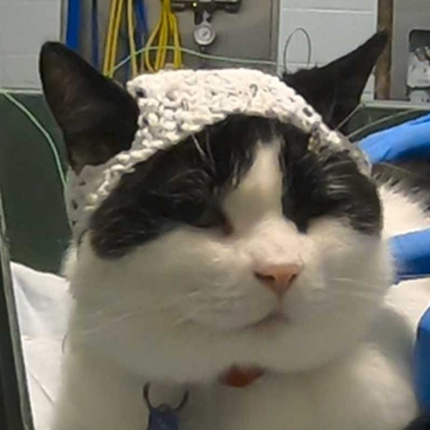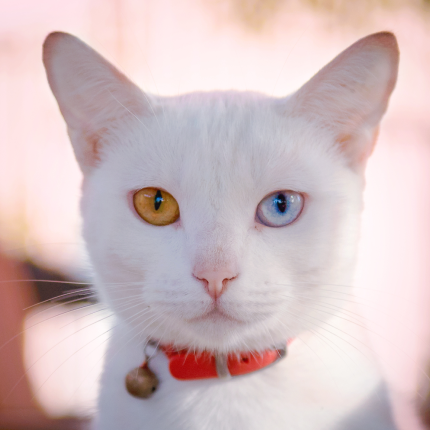Researchers Utilize Adorable Hats to Measure Cats’ Brainwaves

Photo credit: Science Direct
No, that title is not a typo. In a novel approach to studying feline brain activity, researchers from the University of Montreal have designed a unique crochet beanie lined with electrodes to measure the brainwaves of cats. These darling hats provide a cute accessory for cat subjects and allow for the noninvasive conduct of EEG (electroencephalogram) brain scans without sedation. The findings from this research were published in the Journal of Neuroscience Methods.
Why The Crocheted Cat Hat?
The crocheted cat hat was created from a practical laboratory challenge. The researchers aimed to utilize EEG technology to identify brain signals in cats suffering from osteoarthritis. This chronic and painful condition affects approximately 25.6% of cats worldwide. However, the task required a method to attach the EEG electrodes securely to the cats’ noggins. At the same time, they remained in their normal, conscious states. Similarly, had proven difficult in previous studies where sedation was used.
Cats Being Cats
The research team encountered significant challenges when placing the electrodes on the cats’ heads. Cats are notorious for their aversion to wires, often swatting at them or shaking off any devices attached to them. Frustrated by the frequent need to replace the cables, the researchers sought inspiration from a YouTube tutorial on crocheting cat hats. With the assistance of graduate students and ample patience, they successfully crafted custom wool caps, embedding the electrodes inside so that the cats would not see them. This approach marks the first known instance of EEG recording in conscious cats.
Cats’ Reactions to the Hats
While the hats proved largely successful, not all cats immediately embraced their new headwear. The study involved 11 cats with osteoarthritis, comprising six females and one male. These cats were housed in a comfortable, dimly lit environment with perches, beds, and scratching posts. Despite the researchers’ efforts, one cat shook off the EEG hat, while another appeared to fall asleep during the experiment.
Measuring Responses to Pain Treatments
With the ability to non-invasively measure the brainwaves of the cats, the researchers proceeded to examine the cats’ responses to calming stimuli, such as blue and green lights and grapefruit scents. Although it remains unclear whether these stimuli effectively reduce pain in cats, however, the experiment is considered a significant step in demonstrating the feasibility of using EEG technology on awake and alert cats.
The researchers emphasized that this study opens new avenues for investigating feline chronic pain and the potential modulation of such pain through sensory interventions. As this research progresses, it may pave the way for improved treatments and understanding of cat pain management.

Featured Articles

Greebles and Cats: The Origin and the Meaning
You may have seen an internet sensation concerning cats labeled “greebles.” Feel out of the loop? We’re here to help you. In 2019, Reddit user /user/literallyatree commented on a Reddit post about a cat that looks like it’s trying to slap a ghost. This user commented: “My family calls things…

Why Do Cats Roll Over Into Their Backs But Not Let You Touch Their Bellies?
It’s common knowledge dogs love to have their tummies rubbed when they freely lay down before you and roll onto their backs. But, if you’re also familiar with cats, you know that when they roll onto their backs with their bellies exposed, rubbing the belly will most likely result in…

The Odd-Eyed Cat (AKA Heterochromia)
Cats are already beautiful and fascinating creatures, but people are bound to take notice when they have something as captivating as two different colored eyes. Odd-eyed cats always have one blue eye paired with either a green, yellow, or brown eye. This form of heterochromia occurs in other animals, including…
